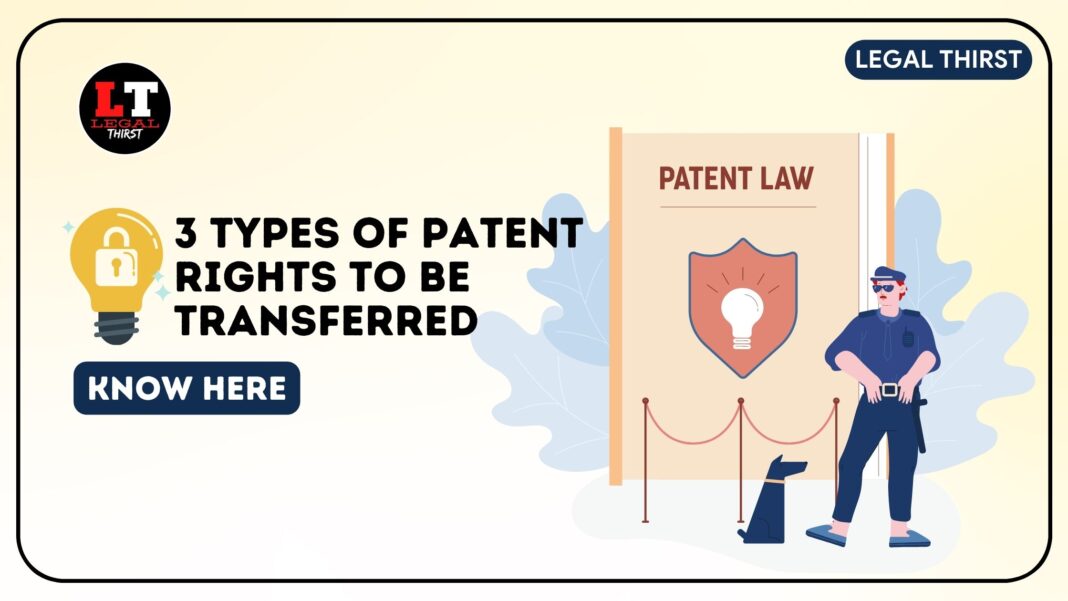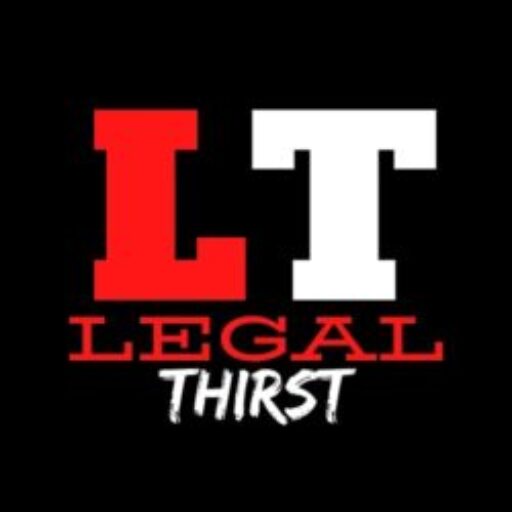This article discusses the transfer rights under the Patent Law, know here whether the ‘Patent Rights’ can be transferred. There are three main ways in which a patent can be transferred from one person (the patentee) to another:
- Granting a license
- Assignment
- Transmission.
License- A patent license is permission granted by the patentee to another person or company to make, use, or sell the patented invention. A license can be exclusive (granted to only one licensee) or non-exclusive (granted to multiple licensees).
Assignment- An assignment is a transfer of the entire ownership of the patent from the patentee to another person or company. This requires a written document, called an assignment deed, which must be signed by both the assignor (the patentee) and the assignee (the person or company receiving the assignment).
Transmission- Transmission refers to the transfer of ownership of a patent due to the death of the patentee. The patent will be transferred to the patentee’s heirs or estate, as specified in their will or according to the laws of inheritance in the relevant jurisdiction.
It’s important to note that a patent can also be abandoned by the patentee, in which case it will no longer be in effect.
Table of Contents
LICENCE-
The patentee is entitled to give a licence of right for making use of the patent to any person in accordance with the procedure prescribed in the Patent Act and Rules. Patent licenses can be of two types-
- Compulsory License
- Licences of rights
COMPULSORY LICENSE (SEC 84 OF PATENT ACT, 1970)
At any time after the expiration of three years from the date of the grant of a patent, any person interested may make an application to the Controller for the grant of compulsory licence on patent on any of the following grounds-
(a). that the patented invention has not satisfied the reasonable requirements of the public,
(b). that the availability of such patent invented is not on reasonable price,
(c). that in India the patent invented is not working.
‘LICENCES OF RIGHT’
Before the amendment in 2002 to the Patent act 1970, if the comptroller determines that the patented invention has not been satisfied (made available to the public) or is not available to the public at a reasonable price, he or she has the authority to issue an order for the patent to be endorsed with the words “licences of right.” This endorsement is intended to serve the public interest by ensuring that the patented invention is made available to the public at a reasonable price.
If a patent has been endorsed with the words “licences of right,” then any person interested in working (using or exploiting) the patented invention in India may require the patentee to grant them a license for that purpose after the expiration of 3 years from the date of endorsement. The terms of the license must be mutually agreed upon by the patentee and the licensee. This provision allows the public to gain access to patented inventions that are not being made available or are not being made available at a reasonable price, helping to ensure that the patented inventions are used for the benefit of the public.
PUBLIC USE OF AN INVENTION
Public use and exercise of an invention refer to the use and exploitation of the invention in public, rather than by the public. In other words, the invention is being used or exercised in a way that is visible or accessible to the general public. For a patent to be considered void (invalid), the invention and the manner in which it can be used must be made known to the public through a description in a work that has been publicly circulated, or through a specification that has been enrolled. It is not necessary for the invention to be actually used by the public or for it to be widely known to the public for a patent to be considered void. This provision is intended to ensure that patented inventions are used for the benefit of the public, rather than being kept secret or restricted from use.
A license is a legal agreement that allows a person or entity (the licensee) to use a patented invention in a specific manner. A license can be express (explicitly granted in writing), implied (arising through the actions or conduct of the parties), or statutory (provided for by law). A license can also be exclusive, non-exclusive, or limited. An exclusive license grants the licensee the exclusive right to use the patented invention, meaning that no one else, including the patentee, can use the invention without the permission of the licensee. A non-exclusive license, on the other hand, allows the patentee and others to use the patented invention. A limited license places certain restrictions on the use of the patented invention, such as limiting the licensee to using the invention in a specific place, for a specific time period, or for a specific purpose. A sole license is similar to an exclusive license, but it only prevents others (besides the patentee) from using the patented invention, rather than preventing the patentee from using the invention as well.
ASSIGNMENTS
A patentee has the right to assign their patent rights to another person or entity, either in whole or in part. The assignee becomes the owner of the assigned patent rights and has the same rights and responsibilities as the original patentee. When there are two or more assignees, they become co-owners of the patent, which means that they all have equal rights and responsibilities in relation to the patent. It is important to note that the assignment of a patent must be in writing and must be registered with the relevant patent office in order to be effective.
Assignments of the patent can be done in 2 different ways as follows-
- Legal Assignment- An assignment is a legal transfer of ownership of a patent from the original patentee (also known as the “assignor”) to the assignee. An agreement to assign is a document that sets out the terms and conditions under which a patent will be assigned in the future. Once the assignment is complete and the necessary documentation has been filed with the relevant patent office, the assignee becomes the legal owner of the patent and has the same rights and responsibilities as the original patentee. The assignee’s name can then be entered in the register of patents as the proprietor of the patent, and they can exercise all the rights of the proprietor of a patent.
- Equitable Assignment- An equitable assignment is a transfer of ownership of a patent that is based on an agreement between the assignor (the original patentee) and the assignee. An equitable assignment can be made by any document, such as a letter or undertaking that clearly sets out the terms of the assignment. An equitable assignment is effective immediately and can be made even while a patent application is still pending. In equity, the assignee is entitled to their share of the patent, but legally, the patentee is still treated as the proprietor of the patent until a legal assignment is made. An equitable assignee cannot have their name entered in the register of patents as the proprietor of the patent until they obtain a legal assignment. However, they can take legal action against the assignor/patentee to compel them to execute a legal assignment.
TRANSMISSION
When the patentee dies, their interest in the patent passes to their legal representative as part of their estate, just like any other property. The legal representative is responsible for managing the patent and can transfer it to another party if they choose to do so. Similarly, if the patentee becomes insolvent or bankrupt, the patent may be transferred to a creditor as part of the bankruptcy or insolvency proceedings. In the case of a company, if the company is dissolved, the patent may be transferred to one of the shareholders or to a third party. The specific process for transferring a patent in these cases will depend on the laws of the country in which the patent was granted
Conclusion
A patent is a legal protection granted to an inventor for a certain period of time, in exchange for disclosing their invention to the public. A patent gives the patent owner the right to exclude others from making, using, selling, and importing the patented invention without the owner’s permission. There are three main ways in which a patent can be transferred from one person (the patentee) to another: by granting a license, by assignment, or by transmission.
A patent license is permission granted by the patentee to another person or company to make, use, or sell the patented invention. A license can be exclusive (granted to only one licensee) or non-exclusive (granted to multiple licensees).
An assignment is a transfer of the entire ownership of the patent from the patentee to another person or company. This requires a written document, called an assignment deed, which must be signed by both the assignor (the patentee) and the assignee (the person or company receiving the assignment).
Transmission refers to the transfer of ownership of a patent due to the death of the patentee. The patent will be transferred to the patentee’s heirs or estate, as specified in their will or according to the laws of inheritance in the relevant jurisdiction.
It’s also important to note that a patent can be abandoned by the patentee, in which case it will no longer be in effect.
Disclaimer: The opinions and views in the articles and research papers published on this website; are personal and independent opinions of the author. The website is not responsible for them.
Legal Thirst has created a telegram group for exchanging legal knowledge, Events, and various opportunities.
You can click on this link and join:
Follow Legal Thirst on Instagram and Subscribe to our YouTube channel for more amazing legal content.

